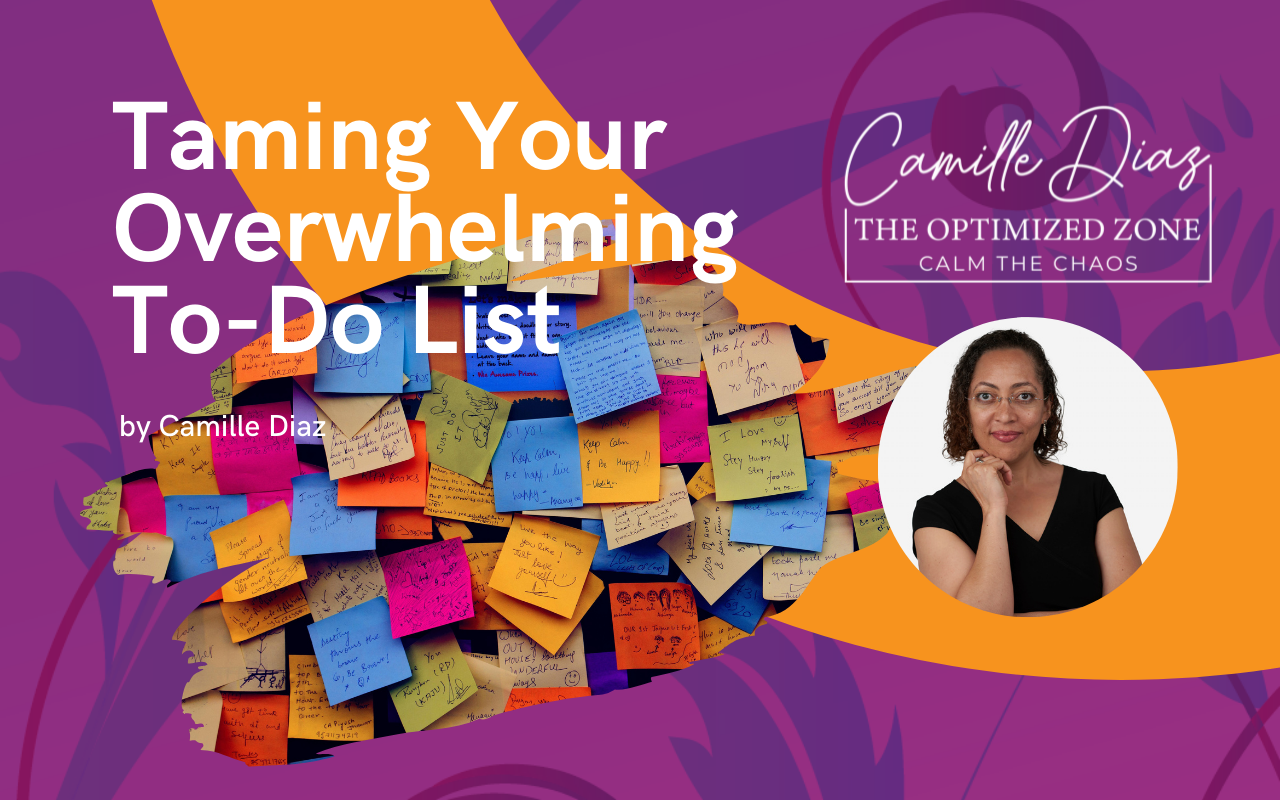Not all tasks are created equal. Therefore, not all tasks should be treated equally. So why do we typically lump all of our tasks onto one big to-do list and then expect we can get them all done? Usually because we’re trying to reduce our feeling of overwhelm by making some sort of an organized list and keep hope alive by thinking we can get at least a few things accomplished from said list.
Unfortunately, what usually happens is we all end up frustrated at the end of the day because only two out of the twenty-seven things that needed to be done actually got done and we know tomorrow’s to-do list is likely to be even longer. Here’s a way to think about tasks which may help you prioritize and manage them a little bit better.
1. One-Time Tasks
One time tasks are just that. Tasks which take less than 15 minutes to complete and only need to be done one time. These might be following up with a person you spoke to last week or checking on an order to see when it shipped. Think “one and done.”
One-time tasks can be completed at any time during the day. Whenever you have a few minutes you can knock out one or two. If you haven’t gotten to them all by the end of the day you either need to stay and get them finished or let them roll to your to-do list for tomorrow. If your task list is regularly not finished at the end of each day or each week the way to solve it is to block dedicated time in your calendar for completing the task list.
2. Recurring Tasks
Recurring tasks are those which need to be completed on a regular basis like every day or every week. Entering recurring tasks into something like Google Calendar as “reminders” will allow you to choose how often the task should reoccur. Reminders have all the same recurring options as events so they can reoccur once a day, once a week, once a year, or any custom time you choose like on the third Friday of each month or every six weeks on the second Tuesday of the week.
Ok, that last one was just to check if you’re still paying attention. I know this stuff gets pretty detailed and a little overwhelming. Hang in. You can do this!
You can choose a particular time if you want the reminder to appear at a certain time like the beginning of your work day or right after lunch. Since “tasks” can be done at any time during the day I find it’s better to click the “all day” box and have the reminder sit at the top of the calendar. This makes it easy to access at any time and it does not get confused with events which are listed in the calendar. If you notice you regularly forget to look up there at the top of the calendar, you’ll probably be better off setting a specific time.
3. Circular Tasks aka Chores
These are the tasks which tend to cause people the most frustration. Take laundry for example. The moment I hang the last clean shirt in the closet, someone inevitably walks in with a pair of stinky socks and throws them in the dirty clothes bin. Sorry to be the one to break it to you, but that’s called life. Instead of hating that nothing is ever done, try to accept that laundry, cooking, bill paying, bookkeeping, grocery shopping, marketing, cleaning, and a whole host of other things will never be completely done. What they will be is “done for now.” If you can get these things on a rotation, you can mark them off the list. Simply see them as done for now and don’t worry about when they will need to be done again. Relax! Done for now is good, so you can mark it off the list for the moment and be happy. That will free up your brain space for other more exciting events.

